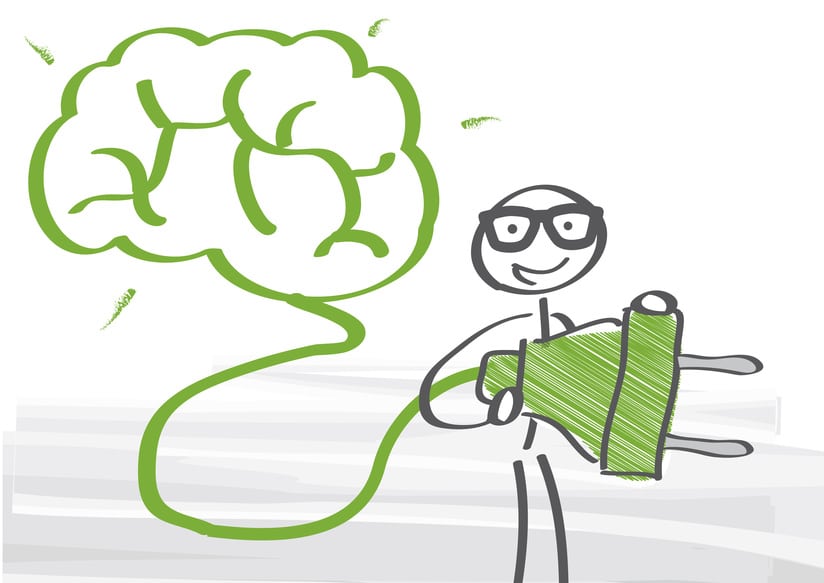10 Tricks Our Brain Plays On Us
If you’ve ever felt that your brain has betrayed you, you’re not alone. It seems that the organ is quite the prankster and sometimes, even a deceiver.
Here are 10 tricks our brains play on us.
Number 10. Phantom Cellphones. With new technologies come new mental processing abilities, and hearing your phone ring or feeling it vibrate when it’s doing no such thing is among them. It’s not typically harmful or indicative of a bigger problem, it’s just your brain mixing up the external clues it receives.
Number 9. Moon Illusions. Many have been duped into thinking that the evening’s rising moon is particularly large, when really it’s just the same, old regular size. It’s a common illusion caused by the way we perceive things on the horizon as opposed to those overhead.
Number 8. Change Blindness. Among the most prevalent examples of this is when an actor in a movie is switched out for a stunt double, and the audience doesn’t notice. The reason behind it is, in part, that our brains prefer stability. Another is that sometimes, our minds just get overloaded, and can’t process every little detail.
Number 7. False Memories. Recalling past moments can be difficult, and the ones retrieved can be unreliable. Any number of things can alter one’s perception of days gone by, including suggestion, recent events, and competition from other memories.
Number 6. Overlooking Typos. It’s pretty tough to serve as your own proofreader, as you brain will forever be focused on the greater meaning of the prose rather than the small technicalities. While it’s immersed in the high-level task of comprehension, it automatically adjust for – and ignores – whatever gets in its way, including misspellings, missing words, and transpositions.
Number 5. Apophenia. Humans have the truly spectacular ability to find meaning in even the most random assemblages of objects, experiences, and images. For some, it’s the force behind their creativity, and for others it’s the burden of mental illness. Those in the middle of the range are mostly prone to seeing images in clouds and faces on grilled cheese.
Number 4. Tasting with our eyes. Color has been found to have a large influence on how we experience food. Some say red foods are often perceived as being sweet, while green edibles are associated with the crispness of vegetables or the sourness of under-ripe fruit.
Number 3. Understanding jumbled words. When people read, much of the focus given to individual words is on the characters that begin and end them. If the middle is all messed up, it doesn’t really matter as the brain will perform an autocorrect of sorts, as it’s wired to gather the information it expects to find.
Number 2. Filling in sensory information. In cases where people are deprived of experiencing sensations, the mind will just start to make some up. They’re not always good substitutes, however, and often present as hallucinations, both auditory and visual.
Number 1. Feeling what others do. Most people can relate to others emotionally, but there are a few who can actually share what others experience physically. The condition is called mirror-touch synesthesia, and those affected by it can feel the touch they see being given to another.
Have you ever experienced any of these brain tricks?
source: Geobeats
Vocabulary
organ | szerv |
prankster | tréfacsináló |
deceiver | csaló, félrevezető |
indicative of | azt jelzi, arra utal |
external clues | külső jelek |
to be duped | átverve lenni |
to perceive | észlelni |
prevalent | elterjedt, jellemző |
stunt double | dublőr |
retrieved | visszaállított, felidézett |
typo | elütés, szövegbeli hiba |
proofreader | olvasószerkesztő, lektor |
to be immersed | elmerülni valamiben |
transposition | átvitel, felcserélés |
apophenia | apofénia |
assemblage | összeállítás |
burden | teher |
to be prone to | hajlamos valamire |
edible | ehető |
jumbled | összekevert |
to be wired to | úgy van beállítva, hogy |
sensory | érzékeléssel kapcsolatos |
substitute | helyettes |
mirror-touch synesthesia | tükör-érintésesszinesztézia |






